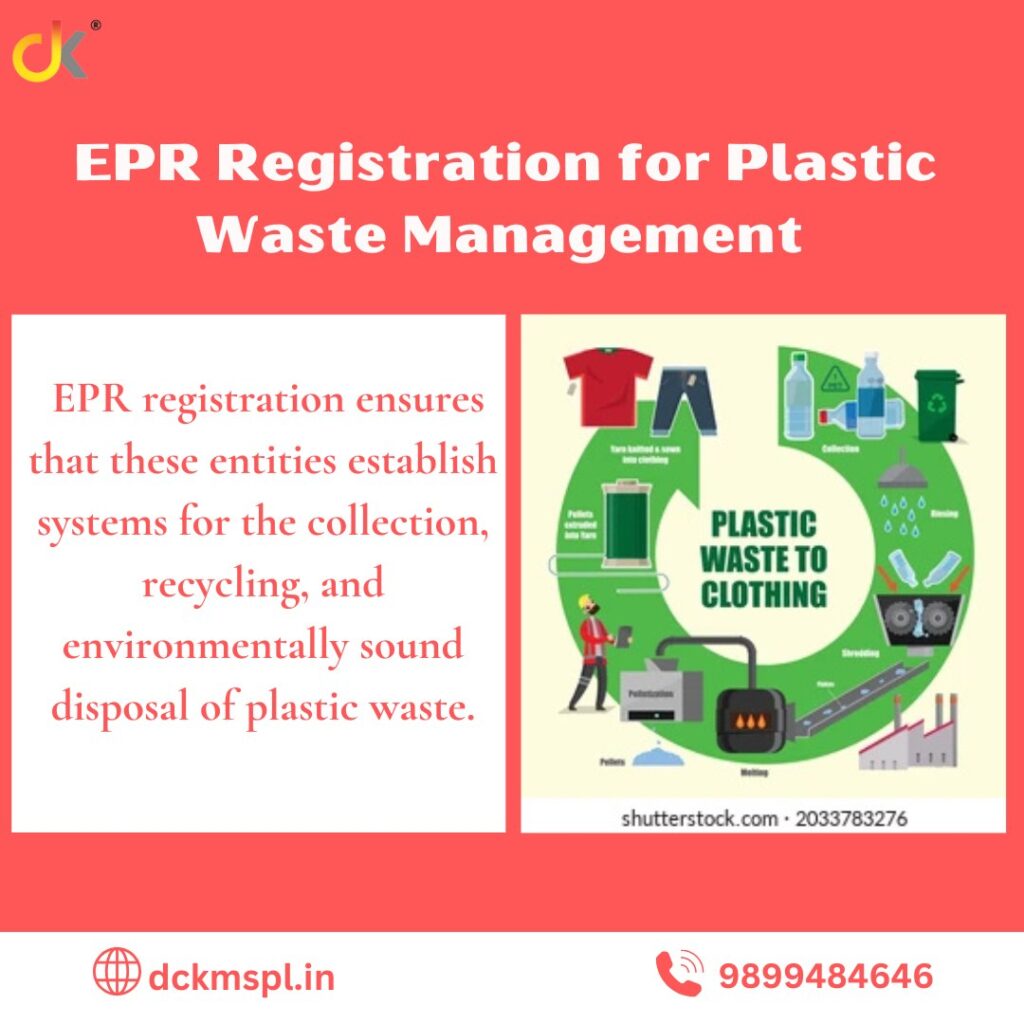Extended Producer Responsibility (EPR) registration plays a crucial role in tackling the growing challenge of plastic waste. With the rapid increase in plastic consumption, effective waste management is more important than ever. EPR registration ensures that producers, importers, and brand owners are accountable for managing plastic waste, promoting sustainability, and supporting a circular economy.Through compliance with EPR guidelines, companies contribute to cleaner ecosystems while meeting legal obligations related to plastic waste management.As plastic consumption continues to rise, the environmental burden associated with plastic waste becomes more pressing. In response, Extended Producer Responsibility (EPR) registration has emerged as a crucial framework for managing plastic waste.
What is EPR?
Extended Producer Responsibility EPR registration for plastic waste management is a policy approach that shifts the responsibility of waste management from governments to producers. Under EPR, companies that manufacture, import, or sell plastic products are required to manage the entire lifecycle of their products, including collection, recycling, and environmentally sound disposal. This strategy encourages businesses to adopt sustainable practices, reduce plastic pollution, and contribute to environmental conservation.EPR registration for plastic waste management ensures that these entities establish systems for the collection, recycling, and environmentally sound disposal of plastic waste. This process helps reduce the environmental impact of plastic, promotes sustainable waste management practices, and supports a circular economy.
Why is EPR Registration Necessary?
EPR registration is essential for several reasons:
- Reducing Plastic Pollution: With billions of tons of plastic waste generated annually, EPR ensures that producers play a significant role in minimizing plastic’s environmental impact.
- Encouraging Recycling and Reuse: By requiring companies to establish systems for recycling and reusing plastic waste, EPR promotes the efficient use of resources and helps create a circular economy.
- Compliance with Regulatory Requirements: Many countries have made EPR registration mandatory, with penalties for non-compliance. Companies must comply with these regulations to operate legally.
- Sustainable Business Practices: EPR registration encourages companies to rethink product design and packaging, promoting the use of eco-friendly materials and reducing single-use plastic.
Steps to Complete EPR Registration for Plastic Waste Management
- Identify the Regulatory Requirements: Understand the specific EPR guidelines set by local authorities or environmental agencies. These rules may vary depending on the region and type of plastic products involved.
- Submit an EPR Plan: Companies must submit an EPR plan detailing how they intend to manage the plastic waste associated with their products. This plan should include strategies for collection, recycling, and disposal.
- Register with the Relevant Authority: Producers need to register with the designated environmental regulatory body, providing all necessary documentation, including the EPR plan.
- Implement the EPR Plan: After registration, companies must execute their EPR strategies, which could involve setting up collection systems, partnering with recycling facilities, or working with waste management organizations.
- Report Compliance Annually: Companies are required to submit annual reports demonstrating compliance with EPR obligations, detailing the amount of plastic waste collected, recycled, or safely disposed of.
Challenges in EPR Registration
- High Compliance Costs: Setting up waste management systems and ensuring compliance with regulations can be expensive, especially for small and medium-sized enterprises.
- Complex Regulatory Environment: Navigating various regional EPR guidelines and keeping up with frequent regulatory changes can be challenging.
- Limited Recycling Infrastructure: In some areas, the availability of recycling facilities is inadequate, making it difficult for companies to meet their EPR obligations.
Benefits of EPR Registration
- Environmental Protection: EPR helps in reducing the environmental impact of plastic waste by ensuring proper waste disposal and recycling.
- Enhanced Corporate Image: Companies that comply with EPR guidelines demonstrate their commitment to sustainability, boosting their brand reputation.
- Resource Efficiency: By promoting recycling and reuse, EPR encourages the efficient use of materials, reducing the need for virgin plastic production.
- Legal Compliance: Companies that meet EPR requirements avoid fines and penalties while contributing to regulatory goals.
Conclusion
EPR registration for plastic waste management is a critical step towards creating a sustainable future. By holding companies accountable for their products’ environmental impact, EPR encourages responsible production and waste management practices. Despite some challenges, the benefits of EPR outweigh the costs, making it a valuable strategy for reducing plastic pollution and promoting a cleaner, healthier environment.EPR registration for plastic waste management is a regulatory approach aimed at reducing plastic pollution. It mandates that producers, importers, and brand owners take responsibility for the entire lifecycle of their plastic products, from production to end-of-life disposal
